Mirtazapine
introduction
Due to its chemical structure, mirtazapine is one of the so-called tetracyclic antidepressants, i.e. drugs that are used in depression. In Germany it can be found on the market under the trade name Remergil®.
It is a prescription-only preparation that is available in various strengths and dosage forms. There are film-coated tablets with 15 mg, 30 mg or 45 mg of the active ingredient mirtazapine, orodispersible tablets also with 15 mg, 30 mg or 45 mg mirtazapine or an oral solution, 1 ml of this solution containing 15 mg mirtazapine. All of these forms are taken orally, i.e. by mouth, and can be taken with or without food.
There is also a concentrate that is administered via the vein (IV).

Areas of application
The antidepressant Mirtazapine is because of his mood-enhancing effect used in various diseases of the depressive spectrum and is only for depressive illnesses authorized. Mirtazapine is suitable because of its sedative effect especially for those affected who attend at the same time sleep disorders Suffer.
It is particularly suitable for tense melancholics. In studies where the effect of Mirtazapine with others Medicationused to treat depression has been compared Mirtazapine did well and was tolerated by most patients. In addition to the diseases that are mentioned in their approval, drugs can also be used for other diseases; one then speaks of what is known as “off-label use”. Outside the approval, that is, off-label, is Mirtazapine also used to treat generalized anxiety disorder, a Panic disorder, a social phobia, one post traumatic stress disorder and insomnia used.
Problem with weaning
The antidepressant Mirtazapine does not care for one Dependency. However, sudden discontinuation of the preparation can cause discomfort. Most of the time, however, these are only minor and disappear on their own. Symptoms that can occur after sudden discontinuation are for example sleep disorders, Restlessness, Anxiety, a headache and nausea. How pronounced these complaints are depends on the duration of treatment and the Daily dose from mirtazapine. Mirtazapine should be used to keep symptoms as low as possible be tapered off, that is, you should lower the dose slowly until that drug can be discontinued entirely.
Interactions
The Interactions from Mirtazapine with other drugs are low.
The anti-epileptic drugs Carbamazepine and Phenytoin can break down Mirtazapine Accelerate in the body, which may result in an increase in the dose of mirtazapine.
If Mirtazapine is used together with the antidepressant lithium taken, the effects as well as the side effects of mirtazapine can be increased.
Also the dampening effect of other substances, such as alcohol or Benzodiazepines may be increased if Mirtazapine is taken at the same time.
Contraindications
Mirtazapine must not be part of their therapy plan if they are to Hypersensitivity reactions tend towards the active ingredient or other components of this preparation.
In addition, it must not be used when taking a drug from the active ingredient group of Monoamine oxidase inhibitors (MAOIs) be taken. To be on the safe side, there should be a period of at least 14 days between the discontinuation of a monoamine oxidase inhibitor and the start of therapy with mirtazapine.
14 days should elapse even after discontinuing mirtazapine and starting therapy with a monoamine oxidase inhibitor. Another contraindication for therapy with mirtazapine is leukopenia, i.e. a lower number than the norm white blood cells (White blood cells), which can be found with a blood sample.
Caution should be exercised with the following conditions:
- severe liver dysfunction
- severe renal impairment
and - a tendency to Seizures
If you are unsure, you should definitely consult your doctor or pharmacist.
Mirtazapine and pregnancy / breastfeeding
In the first 12 weeks of the pregnancy no harmful effects on the embryo could be observed when using mirtazapine. This finding is based on approximately 100 observed pregnancies with mirtazapine therapy. If mirtazapine is also used in the further course of pregnancy up to birth, it can be used in newborns Adjustment disorders, how Overexcitability and Tremor condition.
The use of mirtazapine during pregnancy should always be closely coordinated with the psychiatrist and gynecologist.
After the birth, therapy should be resumed immediately with the usual dosage. In general, it can be said that mirtazapine can be prescribed during pregnancy in certain cases, for example if other drugs are more experienced in using them during pregnancy (for example Sertraline or Citalopram) show no corresponding effect.
In patients who are on stable treatment with mirtazapine, no change of therapy should be carried out, even if they are pregnant.
It is known that a small amount of mirtazapine is excreted in breast milk. In spite of this, no clinical symptoms could be observed in eight breastfed infants due to mitrazapine therapy in the mother. Mirtazapine can therefore be prescribed with restrictions during breastfeeding if other drugs, with which there is more experience, do not work adequately.
Please discuss the use of mirtazapine during pregnancy and breastfeeding with your doctor.
Working principle
Mirtazapine acts as a tetracyclic antidepressant centrally in the brain and very effectively inhibits certain receptors (so-called presynaptic? 2 receptors).
Because these receptors are blocked, mirtazapine can also be called a? 2-receptor antagonist. It also blocks receptors for serotonin, also known as 5-hydroxytryptamine (5-HT).
There are different groups of serotonin receptors. Mirtazapine blocks the 5-HT2A receptors and the 5-HT3 receptors to be precise. Blocking these receptors leads to an increased release of the neurotransmitters norepinephrine and serotonin from the nerve endings. This is said to have a positive effect on a depressed mood, as a lack of these messenger substances is responsible for a depression (Read also: The role of serotonin / neurotransmitters in depression).
Because of this mechanism of action, mirtazapine is also known as “NaSSA”. This abbreviation stands for “Noradrenergic and Specific Serotonergic Antidepressant”, which means something like noradrenergic and specifically serotonergic antidepressant in German.
In addition, another group of receptors is blocked. These are histamine receptors (postsynaptic histamine H1 receptors). The sedating, i.e. calming, effect of mirtazapine is attributed to this blockage.
In summary, the antidepressant mirtazapine mainly blocks presynaptic? 2 receptors, serotonin receptors of the 5-HT2A and 5-HT3 types and postsynaptic histamine H1 receptors.









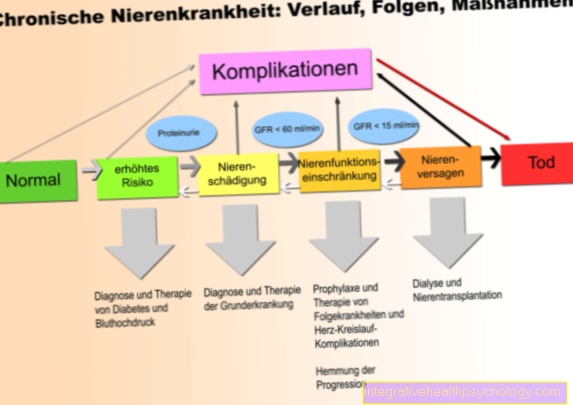
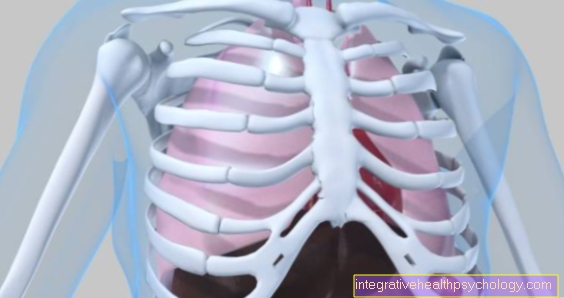
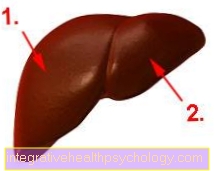

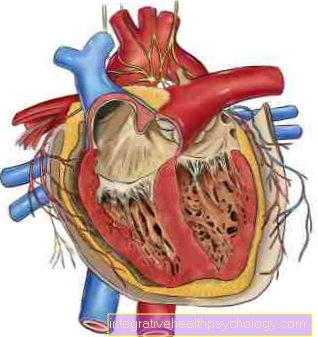
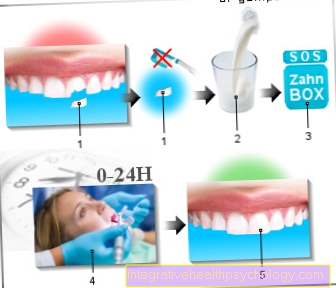









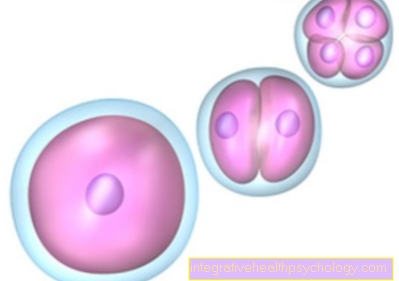

.jpg)


